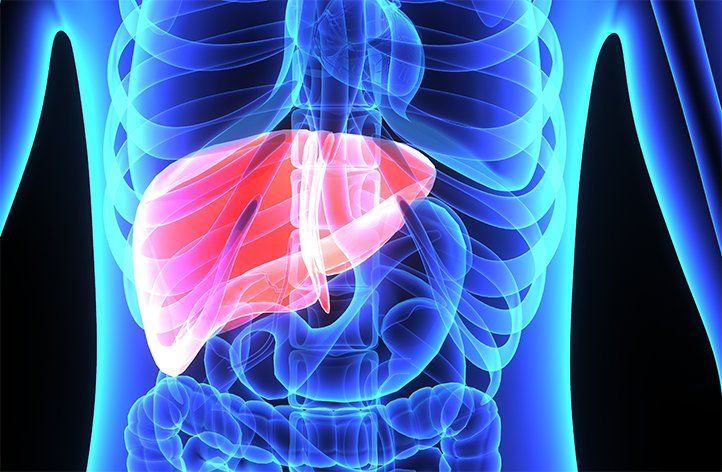Transarterial Chemoembolization Regimen Shows PFS Improvement in HCC
Transarterial chemoembolization plus sorafenib did not significantly improve overall survival in advanced hepatocellular carcinoma vs sorafenib alone.
In the intent-to-treat population, the median TTP was significantly longer in the TACE group vs the control group at 10.0 months vs 5.9 months, respectively.

The addition of transarterial chemoembolization (TACE) to sorafenib (Nexavar) exhibited significantly improved progression-free survival (PFS) and time to progression (TTP) outcomes in patients with advanced hepatocellular carcinoma (HCC) vs sorafenib alone, according to results from the prospective phase 3 SELECT trial (NCT01906216) published in Liver Cancer.
Efficacy data from the trial revealed that the primary end point for overall survival (OS) was not met in the intent-to-treat population with advanced HCC, with a nonsignificant difference of 14.9 months (95% CI, 10.5-19.3) in the TACE/sorafenib group vs 11.9 months (95% CI, 9.0-14.8) in the sorafenib only group (HR, 0.862; 95% CI, 0.645-1.150; P = .312). By contrast, in a per-protocol analysis excluding patients with major protocol violations affecting primary end point evaluation, the median OS significantly favored the investigational group at 14.6 months (95% CI, 11.3-17.9) vs 7.4 months (95% CI, 4.3-10.5) with the monotherapy (HR, 0.539; 95% CI, 0.378-0.769; P = .001).
In the intent-to-treat population, the median TTP was significantly longer in the TACE group vs the control group at 10.0 months (95% CI, 6.4-13.6) vs 5.9 months (95% CI, 3.1-8.7), respectively (HR, 0.686; 95% CI, 0.515-0.954; P = .016). Additionally, in a final post hoc analysis across the same population, the median PFS was 8.5 months (95% CI, 6.7-10.3) vs 5.6 months (95% CI, 4.1-7.1) in the respective treatment groups, significantly favoring the investigational arm (HR, 0.731; 95% CI, 0.547-0.977; P = .034). The TTP and PFS outcomes significantly favored the investigational arm vs the control arm in the per protocol analysis.
“[W]hile the primary [intent-to-treat] analysis did not demonstrate [a] statistically significant OS improvement, clinically meaningful benefits were observed in key secondary endpoints,” Primary author Yan Zhao, PhD, of the Department of Liver Diseases and Interventional Radiology of Xi’an International Medical Center Hospital, Northwest University, in Xi’an, China, wrote in the publication with study coinvestigators. “[T]his phase 3 randomized controlled trial demonstrated the potential superiority of TACE plus sorafenib in the treatment of advanced HCC. Our findings emphasize the importance of combining systemic therapy with locoregional treatment in managing advanced HCC.”
Patients 18 years and older with a definite diagnosis of advanced stage C HCC per the American Association for the Study of Liver Diseases (AASLD) criteria were eligible for enrollment in the study. Additional eligibility criteria included Child-Pugh class A status, an ECOG performance status of 0 to 1, a life expectancy of at least 12 weeks, and 1 or more unidimensional lesions measurable by CT or MRI scan.
Those enrolled were randomly assigned 1:1 to receive TACE/sorafenib or sorafenib alone, stratified by ECOG performance status, number of tumor lesions, tumor size, vascular invasion. Extrahepatic metastasis, and alpha-fetoprotein (AFP) value. Patients in both cohorts received 400 mg of oral sorafenib twice daily, with dose reductions to 400 mg once daily or every other day, as well as dose interruptions, permitted to manage adverse effects (AEs).
In the combination group, conventional TACE was performed, with the first procedure occurring 3 to 7 days after sorafenib initiation and subsequent treatments occurring “on demand” based on radiological response. TACE initially consisted of a 30 to 50 mg injection containing doxorubicin and lipiodol at a maximum mixed dose of 25 mL. Then, patients received embolization with polyvinyl alcohol until complete stasis was attained in tumor-feeding vessels.
In the combination and monotherapy arms, respectively, the median age was 55 years (IQR, 46-64) and 55 years (IQR, 48-62). The majority of patients were male (83% vs 82%), had Hepatitis B or C positivity (78% vs 86%), had an ECOG performance score of 1 (67% vs 70%), and had a Child-Pugh class of A5 (85% vs 79%). Most patients had single tumors (66% vs 53%), tumors greater than 8 cm in size (55% vs 49%), and a tumor burden greater than 6 but no more than 12 (53% vs 53%).
The primary end point of the trial was OS. Secondary end points included TTP, PFS, tumor response rates, and safety.
Treatment-related AEs (TRAEs) were reported in 99% and 96% of the combination and monotherapy arms. AEs leading to sorafenib reductions occurred in 8% vs 6% of each respective group, and dose interruptions impacted 23% vs 13%. The most commonly reported AEs in either arm included hand-foot skin reactions (81% vs 74%), rash or desquamation (70% vs 68%), alopecia (67% vs 59%), diarrhea (58% vs 57%), and fatigue (47% vs 40%).
The incidence of AEs related to post-embolization syndrome, including alanine aminotransferase increases (80% vs 10%), aspartate aminotransferase increases (82% vs 12%), and total bilirubin increases (46% vs 11%) were observed at a significantly higher frequency in the combination arm. They were all successfully treated with conservative therapy.
The most common grade 3 or 4 AEs included hand-foot skin reactions (20% vs 12%) and diarrhea (12% vs 18%). A total of 4% of the TACE arm vs 2% of the sorafenib only arm died due to AEs, which were all deemed related to treatment.
Reference
Zhao Y, Bai W, Ding R, et al. Transarterial chemoembolization plus sorafenib versus sorafenib alone in advanced hepatocellular carcinoma (SELECT): a multicenter, phase 3, randomized, controlled trial. Liver Cancer. Published online May 22, 2025. doi:10.1159/000546530